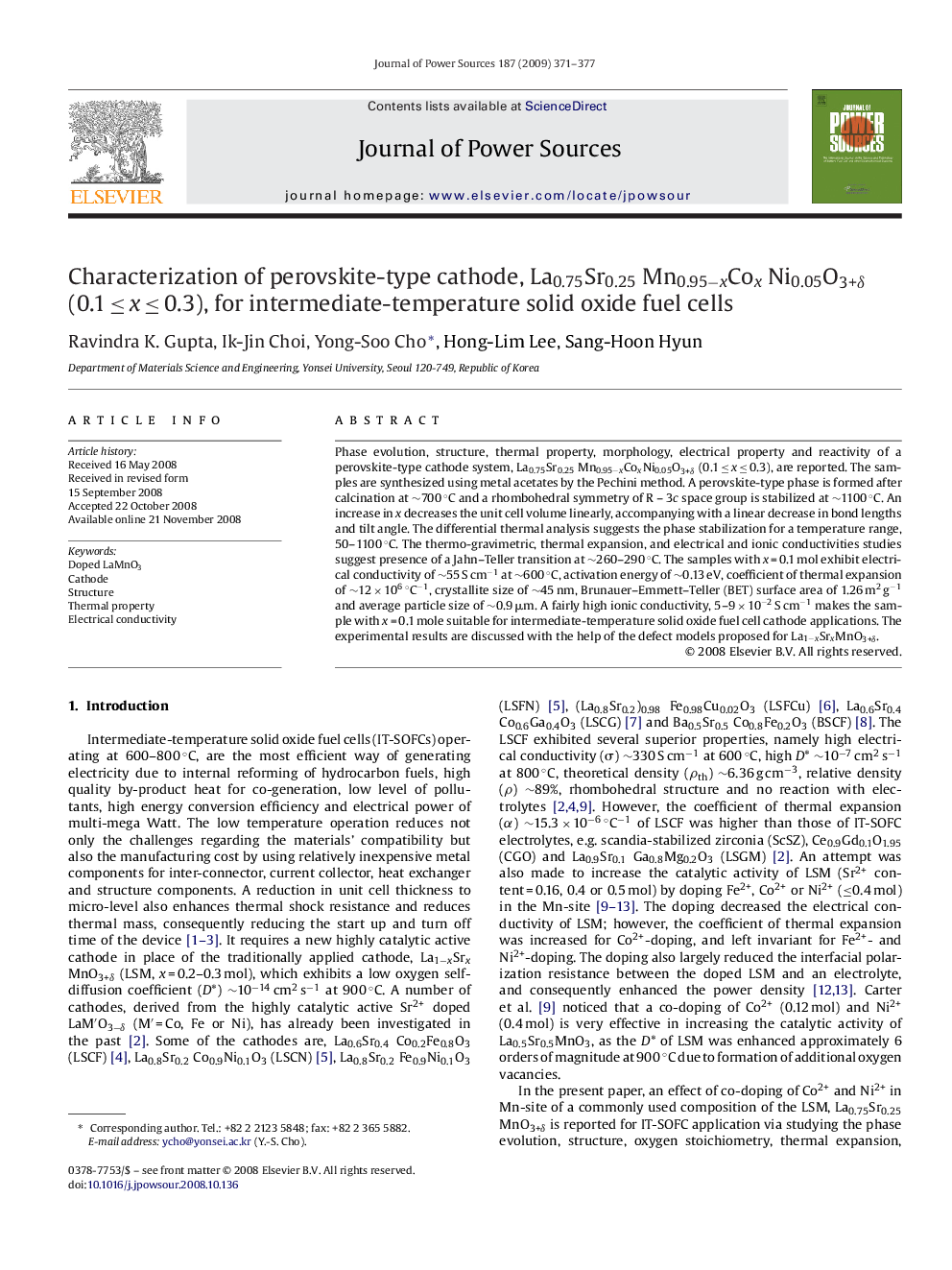| Article ID | Journal | Published Year | Pages | File Type |
|---|---|---|---|---|
| 1285235 | Journal of Power Sources | 2009 | 7 Pages |
Phase evolution, structure, thermal property, morphology, electrical property and reactivity of a perovskite-type cathode system, La0.75Sr0.25 Mn0.95−xCoxNi0.05O3+δ (0.1 ≤ x ≤ 0.3), are reported. The samples are synthesized using metal acetates by the Pechini method. A perovskite-type phase is formed after calcination at ∼700 °C and a rhombohedral symmetry of R – 3c space group is stabilized at ∼1100 °C. An increase in x decreases the unit cell volume linearly, accompanying with a linear decrease in bond lengths and tilt angle. The differential thermal analysis suggests the phase stabilization for a temperature range, 50–1100 °C. The thermo-gravimetric, thermal expansion, and electrical and ionic conductivities studies suggest presence of a Jahn–Teller transition at ∼260–290 °C. The samples with x = 0.1 mol exhibit electrical conductivity of ∼55 S cm−1 at ∼600 °C, activation energy of ∼0.13 eV, coefficient of thermal expansion of ∼12 × 106 °C−1, crystallite size of ∼45 nm, Brunauer–Emmett–Teller (BET) surface area of 1.26 m2 g−1 and average particle size of ∼0.9 μm. A fairly high ionic conductivity, 5–9 × 10−2 S cm−1 makes the sample with x = 0.1 mole suitable for intermediate-temperature solid oxide fuel cell cathode applications. The experimental results are discussed with the help of the defect models proposed for La1−xSrxMnO3+δ.
